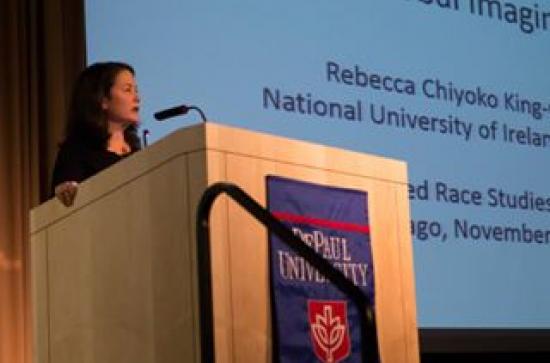How Green Was My Surname; Via Ireland, a Chapter in the Story of Black AmericaPosted in Caribbean/Latin America, Europe, History, Media Archive, Slavery, United States on 2015-12-29 03:58Z by Steven |
How Green Was My Surname; Via Ireland, a Chapter in the Story of Black America
The New York Times
2003-03-17
S. Lee Jamison
Happy St. Patrick’s Day, Shaquille O’Neal!
So many African-Americans have Irish-sounding last names—Eddie Murphy, Isaac Hayes, Mariah Carey, Dizzy Gillespie, Toni Morrison, H. Carl McCall—that you would think that the long story of blacks and Irish coming together would be well documented. You would be wrong.
Randall Kennedy, a professor at Harvard Law School and the author of ”Interracial Intimacies; Sex, Marriage, Identity and Adoption,” said that when it comes to written historical exploration of black-Irish sexual encounters, ”there are little mentions, but not much.”
And most African-Americans do not know a lot about their family names.
“Quite frankly, I always thought my name was Scotch, not Irish.” said Mr. McCall, the former New York State comptroller.
But the Irish names almost certainly do not come from Southern slaveholders with names like Scarlett O’Hara. Most Irish were too poor to own land. And some blacks, even before the Civil War, were not slaves.
…Elizabeth Shown Mills, who recently retired as the editor of the National Genealogical Society Quarterly, said that unlike native-born whites, “Irish were more willing to accept and acknowledge interracial allegiances.”
Before the Civil War, she said, “the free mulatto population had the same number of black moms as white moms.”
Ms. Mills said that mixed-race children would have been given Irish surnames when their Irish fathers married their black mothers, or when their unmarried Irish mothers named children after themselves.
The Irish ended up in the Caribbean, too. Britain sent hundreds of Irish people to penal colonies in the West Indies in the mid-1600’s, and more went over as indentured servants.
Mr. [Charles L.] Blockson noted that “Lord Oliver Cromwell’s boatloads of men and women” sent to Barbados and Jamaica intermingled with the African slaves already there.
Montserrat ended up with the largest Irish community in the West Indies…
Read the entire article here.



